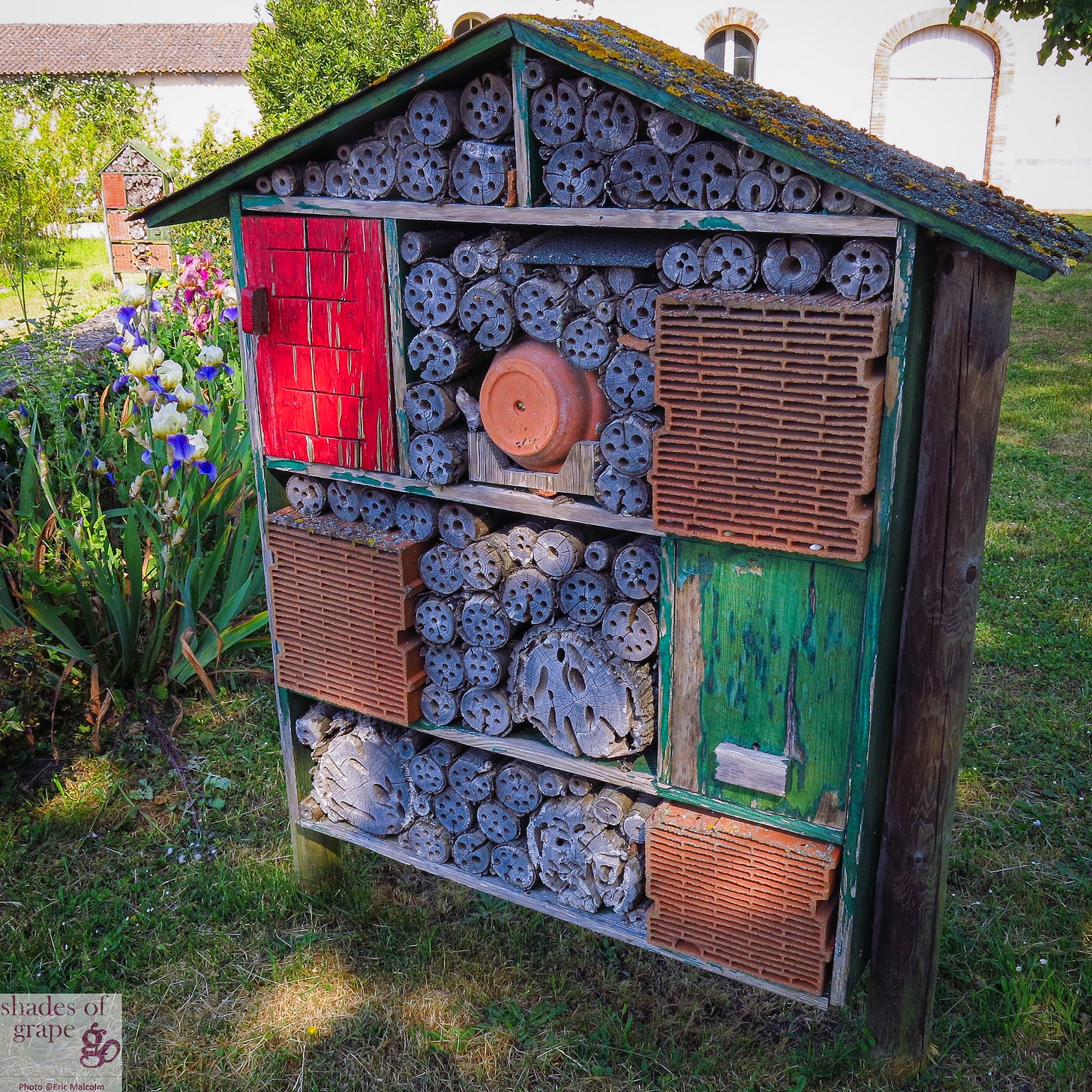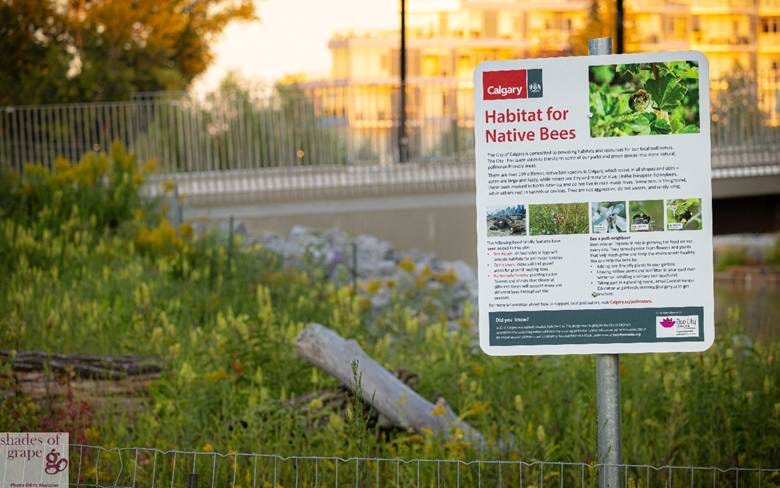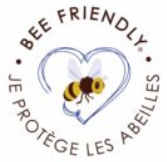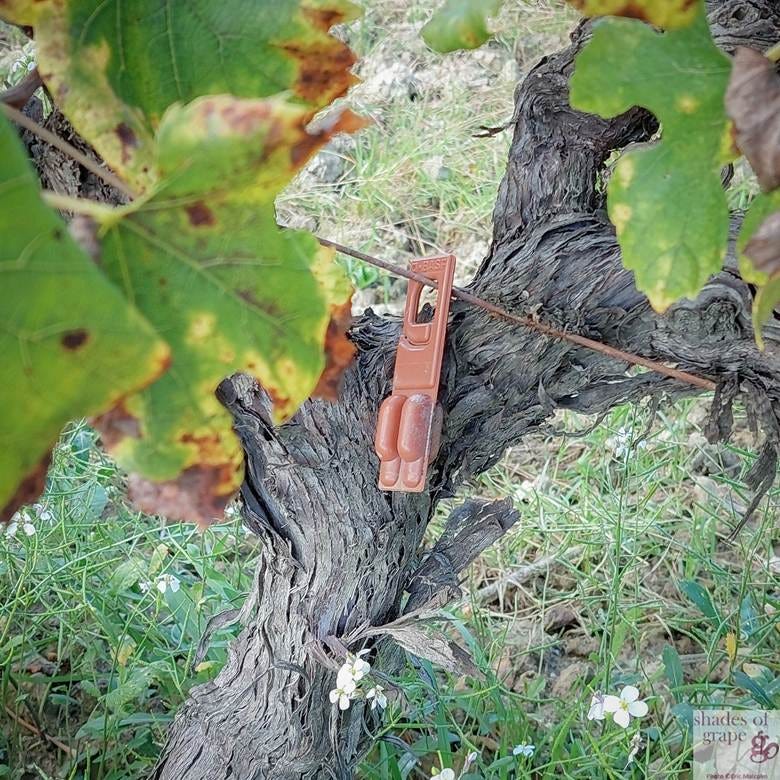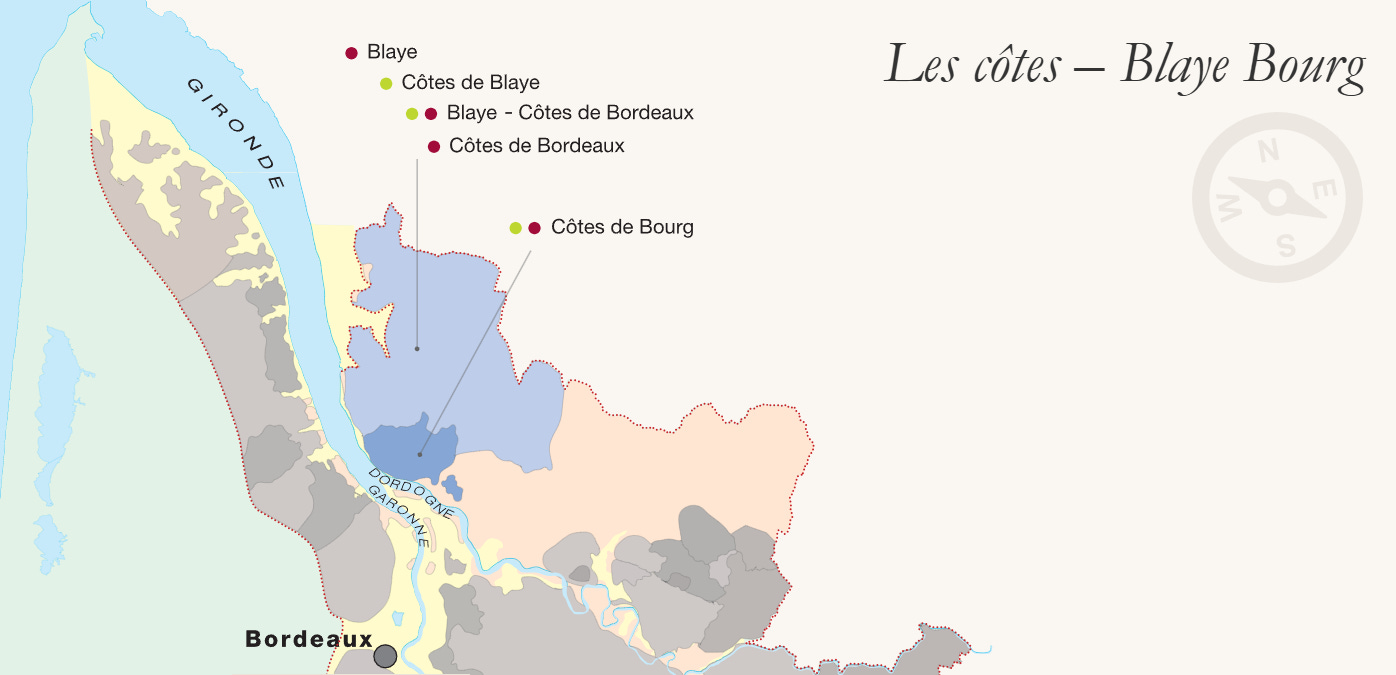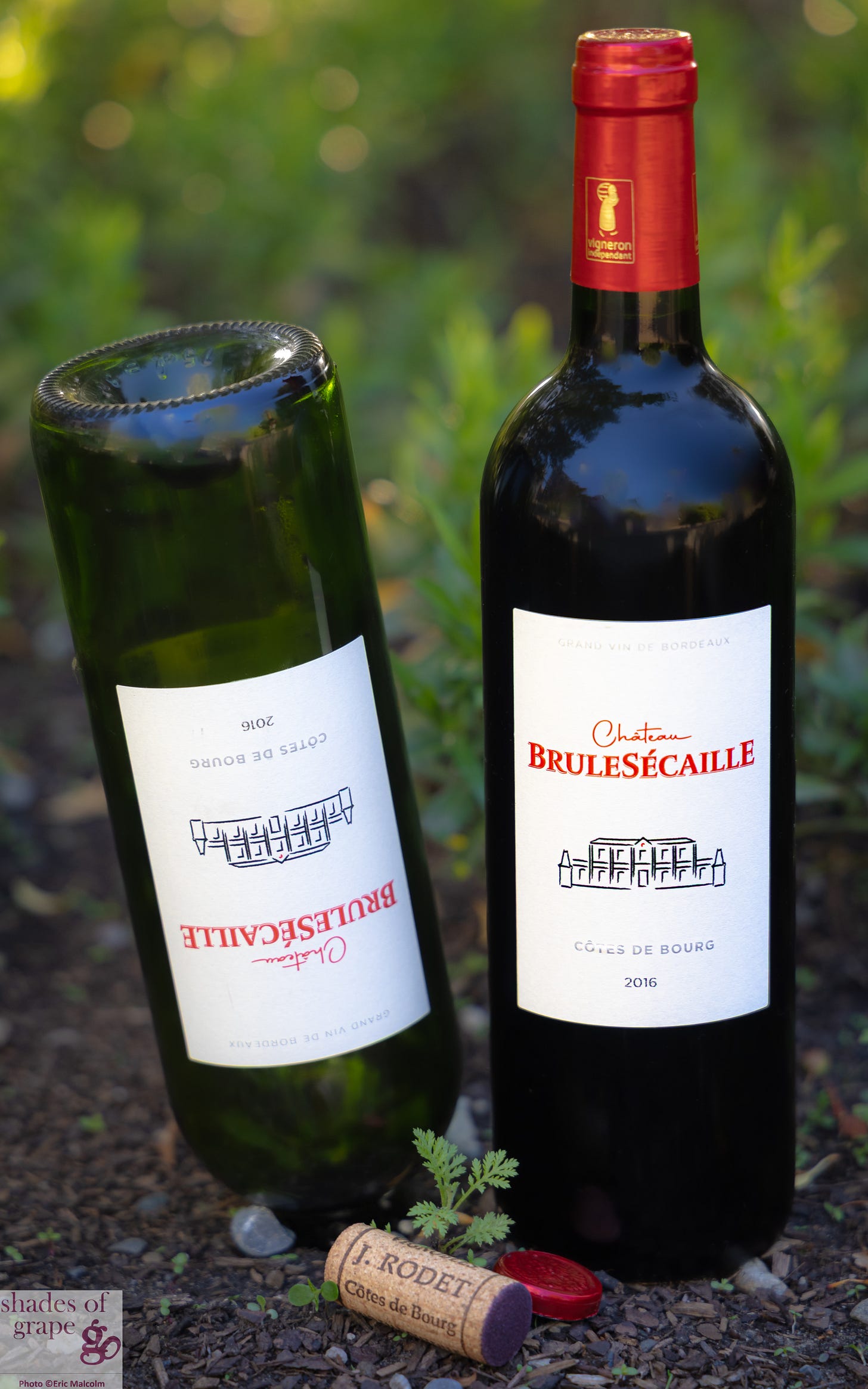Bee Hotels, Bordeaux & Biodiversity - Definitely Worth the Buzz
-sexual confusion, fun guys, predators & more
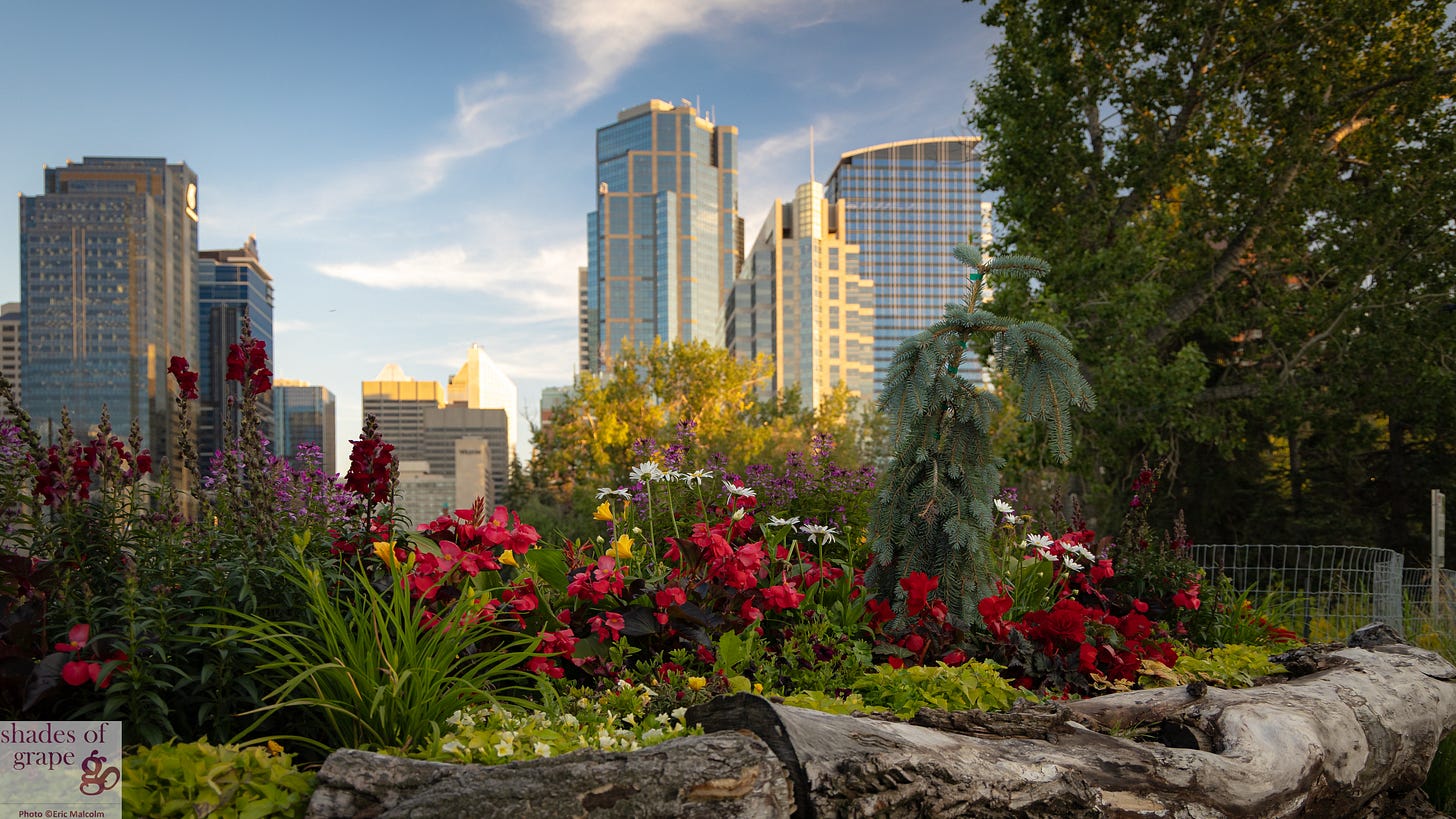
Interested in one-on-one curation time with me? No commitment or minimum purchase required. Flexible appointment times including weekends. Drink better!
Appreciate my wine recommendations? Thanks to all the paid subscribers for their support! Help me continue sharing the world of wine with you!
I am curious. How do you choose topics for these articles?
It revolves around the featured wine as a starting point. This week however, I am mixing it up. The topic came to me biking in my neighbourhood, when I noticed a bee hotel and a bee habitat plot on either side of the Bow River.
Bee hotel? You must be joking?
I am not! Did you know there are over 200 different native bee varieties in Calgary (where I live)?
All this brought me back to Bordeaux where I had seen such a bee hotel. Eventually, I find myself tasting some different Bordeaux bottles to find the perfect featured wine.
Tough job.
I love this logo I found on the website of a producer who was discussing ways they support biodiversity.
Bio-what? Did you make that up?
Biological diversity – biodiversity for short - is part of a healthy functioning ecosystem formed by plants, animals, fungi, and microorganisms. In vineyards, biodiversity benefits grape growing.
Let’s start with soil, including its water content, nutrients, and living soil organisms (if the soils are healthy). These organisms, which have reciprocal relationship with the vines, can improve water quality within the soil and vineyard productivity.
Biodiversity is particularly beneficial in vineyards because vines are not replanted every year, unlike wheat, rice, or oats which are replanted yearly. In extreme cases vines can survive over 100 years – but that is a topic for another post.
I still really don’t get this bio- whatchamacallit. Maybe give an example?
WSET (Wine Spirits and Education Trust) uses Mycorrhizal fungi as a key example.
Fun guy! (hee hee!)
These fungi can benefit vines by allowing them to more efficiently absorb phosphorus, nitrogen, and water. This makes vines more resistant to stressors such as drought and heat. To encourage soil biodiversity, tilling and irrigation are limited to not disturb the soil organisms.
Above the ground, biodiversity can reduce the need for synthetic pesticides, which are costly to buy and apply and can have negative impacts on the ecosystem beyond the vineyard. Basically, biodiversity can create a form of “biopesticides” by supporting predators who prey on certain pests.
So, we are cheering on the predators …?
Well, we are cheering on the predators of the vine predators actually.
Interestingly, biodiversity feeds onto itself (pun intended). For instance, cover crops planted between rows create a habitat for certain predators AND help to control weeds, prevent soil erosion, and reduce water loss.
Fostering biodiversity can take many forms. Having wild areas in the vineyard (sections not under vine) like hedges, grassland, wildflower strips, stone heaps, tree groves, etc. is key.
My absolute favourite however is the “sexual confusion” technique.
Come on, you made that up.
No, totally legit.
Pheromone tags or capsules are attached onto or near vines (see photo) to mess up predators’ mating cycle, reducing their reproduction. This has been used to control moths and mealy bugs in vineyards.
Wow, I was sure you were full of …
… before we move on, I want to hear more about the bees. They would pollinate the vines at the very least. What else?
Actually, vines do not need pollinating - they are fully self-sufficient in that department!
Okay, so why do I care about bees then!
Pollinators support the presence of pollen and nectar, providing nutrition for many precious predators we are trying to support. Bees are considered the most important pollinators, but others supporting the pollination movement are butterflies, moths, hummingbirds, and other insects.
I don’t particularly like predators nor bugs! This is starting to BUG me!
That is my cue to move on to the featured wine - a Right Bank Bordeaux blend which is Merlot dominant (60%) and is supported by 30% Cabernet Sauvignon, and 10% Cabernet Franc. Merlot is sensitive to vine leafhoppers and burls.
Garçon! Nectar and pollen over here please! Get our predators fed and guard our Merlot then!
Go Team Predator!
I love how this schematic gives context of geography and size compared to other French wine regions. As shown, Bordeaux is in southwestern France and has by far the largest area under vine of all French wine regions.
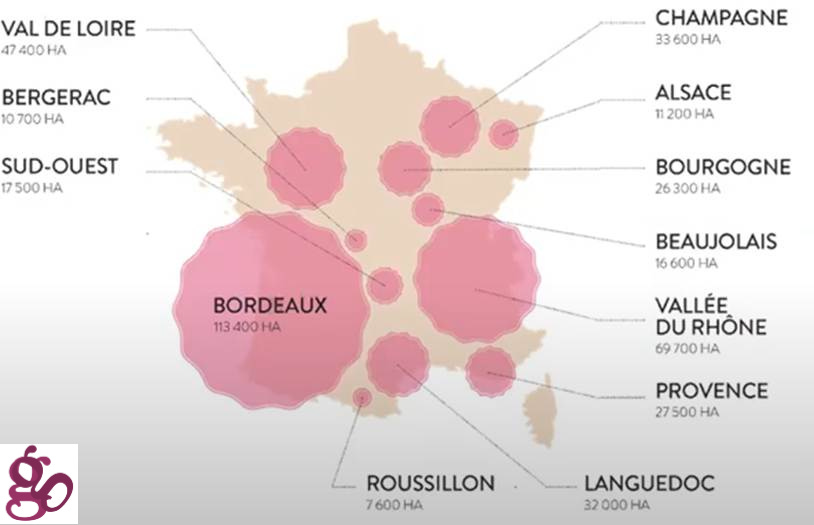
The featured wine by Chateau Brulesécaille is from Côtes de Bourg, a subregion from which I have featured wines before. They can be a great value for your money! This one certainly is! Check out Côtes de Bourg on the map in the darker blue portion.
How does this Bordeaux fit with into personal wine journey?
I loved visiting Bordeaux just before my first classroom session of the WSET level 4 (diploma) in May 2022 (which was in Austria). Bordeaux is a historic area so there is so much to learn from the very knowledgeable region.
Who would you recommend this wine to?
Someone who likes an old-world full-bodied red with a decent amount of tannins. Since this is a 2016, the tannins have had time to soften and to integrate very well into the wine. Typically, Bordeaux wines are meant to be enjoyed with food due to these higher tannins. But everyone has different palates and preferences!
I enjoy Bordeaux reds with red meat, more precisely grilled beef steak or lamb. The protein in the meat pairs great with the high tannins.
Now check out the details on the featured wine.
Enjoying my recommendations? Consider upgrading to a paid subscription.
Château de Brulesécailles Rouge 2016 from Côtes de Bourg, Bordeaux, France
Style: Dry Old World Moderately Full Body Red Wine
Varieties: 60% Merlot, 30% Cabernet Sauvignon, 10% Cabernet Franc
This deep and rich wine has violet, ripe red and black plum, blackcurrant, blackberry, rich blueberry, chocolate, anise, incense, earth, and wet leaves notes. Near the end of the bottle, notes of Christmas pudding (aka dried fruit and baking spice) appeared. The wine is intense in flavours and aromas and has a long finish.
Best pairings: Red meat (grilled beef steak or lamb shank), Boeuf (Beef) Bourguignon, Duck breast with berry glaze, Mushroom risotto, Charcuterie board, Cheese: Comté, Manchego
Serving Temperature: 16-18 degrees Celsius
Serving Tips: Decant! - ideally a minimum of 2 hours - but if you don’t have time or forget - no worries - it’s just wine!!! If you have time - don’t be scared to decant 3-4 hours - taste intermittently! When satisfied, you can pour back into bottle and refrigerate until 45 minutes before drinking.
Price: ~$30 Cdn
If you're in Alberta and want a one-on-one wine curation experience, please reach out! No commitment or minimum purchase required. Interested? Please reach out!
A huge thank you to my paid subscribers—your support helps cover the costs of creating these weekly articles.
Love my wine recommendations? Enjoy my personal wine curation service? If you find value in my writing, consider upgrading to a paid subscription to help me keep sharing the world of wine with you!
Subscribers receive 15% off Wine & Spirits whenever shopping at Cork Fine Wines, ground floor, Bow Valley Square in Calgary.
SOURCES:
Balogh, A. (2023, August 3). 14 best flowers for bees - fill your garden with bee-friendly plants - garden design. GardenDesign.com. https://www.gardendesign.com/flowers/bees.html
Bee friendly farming. Pollinator.org. (n.d.). https://www.pollinator.org/bff
Château Brulesécaille. French Winery - Vineyards Rodet in Cotes de Bourg and Saint Emilion. (n.d.). https://www.brulesecaille.com/en/vins.php
Château Thieuley. (2019, November 27). https://www.thieuley.com/en/home/#
Dal. (n.d.-b). https://cdn.dal.ca/content/dam/dalhousie/pdf/faculty/agriculture/oacc/en/2021/FINAL-%20Biocontrol-%20Janet%20Wallace.pdf
Functional biodiversity in the vineyard. (n.d.-c). https://www.oiv.int/public/medias/6367/functional-biodiversity-in-the-vineyard-oiv-expertise-docume.pdf
Harding, J. and Robinson, J. (2023) The oxford companion to wine. Oxford, United Kingdom: Oxford University Press.
MacNeil, K. (2022) The wine bible. New York, NY: Workman Publishing.
NSF. (n.d.-e). https://par.nsf.gov/servlets/purl/10050178
Orgprints. (n.d.-f). https://orgprints.org/id/eprint/30032/1/biokontrollsyntes_web.pdf
Pollinator. (n.d.-g). https://www.pollinator.org/pollinator.org/assets/generalFiles/2023-Official-Pollinator-Week-Toolkit.pdf
Stoner, K. A., Nurse, A., Koethe, R. W., Hatala, M. S., & Lehmann, D. M. (2022, August 18). Where does honey bee (apis mellifera L.) pollen come from? A study of pollen collected from colonies at ornamental plant nurseries. MDPI. https://www.mdpi.com/2075-4450/13/8/744
Wine & Spirit Education Trust (2021) D3: Wines of the World - An accompaniment to the WSET Level 4 Diploma in Wines. Version 1.2. London: Wine & Spirit Education Trust.
Vins de Bordeaux. Site Officiel Bordeaux.com. (2025, June 25). https://www.bordeaux.com/fr


